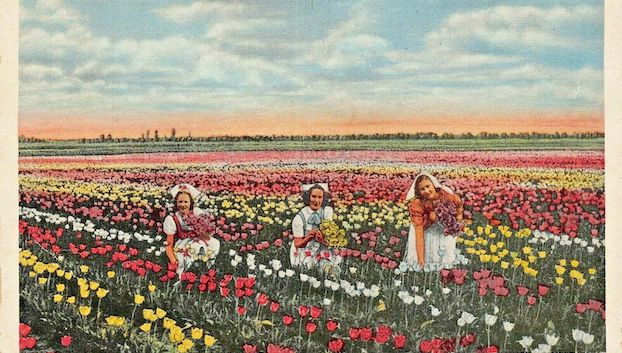Early sign of spring brings back Tulip Festival memories
Published 12:50 pm Monday, February 20, 2023
|
Getting your Trinity Audio player ready...
|
Yay, I just saw the first harbinger of Spring! My neighbor’s yard is full of tulips! And while my flower garden has not produced the lovely yellow flowers yet, as I don’t get as much afternoon sun in my yard as my neighbor, I know it won’t be long before I can enjoy my own.
Looking at the tulips growing in my neighbor’s back yard brought back some wonderful memories of springtime as I grew up in Washington. While I was not born when Washington celebrated the annual Tulip Festival, I loved hearing stories about it.
My grandmother had a front yard with all kinds of spring flowers but her favorite was yellow tulips. And she talked about how tulips grew in abundance at a place called Terra Ceia which she said was a Dutch settlement in Pantego. I later came to learn that Terra Ceia meant ‘Heavenly Land’ in Dutch and it was indeed settled in the early 1900’s by Dutch families who migrated to Beaufort and Hyde Counties.
From what I heard her talk about, the Tulip Festival in Washington was a major and beautiful event. My grandmother was an avid gardener. She grew all kinds of vegetables and fruit trees in our very large back yard and her flower garden was her pride and joy. But the flowers she said that were a part of the Tulip Festival that adorned the downtown and even some boats on the waterfront made her flowers pale in comparison.
I can see why the festival was a wonderful event. According to Isabel Carter Worthy, (a contributor to the book ‘Washington On The Pamlico’ about the Festival) “the Tulip Festival was the idea of Mrs. Olive Rumley for a folk festival in the Spring to salute both the Dutch colonists of Terra Ceia and the beautiful flowers they grew.” The first Festival was held April 6-7, 1937 and continued until 1941, suspended by World War II. The festival was a community-wide project that had the cooperation of Beaufort County and Washington City Schools, Book Clubs, The Chamber Of Commerce, The Rotary and Lions Clubs, The American Legion Auxiliaries and many other groups.
The Festival was held the first week in April as it was the peak blooming season for the tulips.
There were parades with elaborately decorated floats, Dutchman sang folk songs dressed in native costumes, Coast Guard Cutters were open to the public and planes flew overhead. In 1940, according to Washington On The Pamlico, an estimated 30,00 people were in attendance. Traffic was so heavy coming from Greenville to Washington that it took two hours to travel to the festival.
Many years after the festival ended, the Dutch heritage continued to be shared. I remember learning about it in primary school. We would make crepe paper tulips to decorate the classroom. We colored cutouts of tulips, windmills, Dutch children and a flag of The Netherlands. One of my teachers, Mrs. Parham, showed us how to walk in a pair wooden shoes she brought to class. She showed us a National Geographic article about Dutch families and we read about Holland in our Weekly Reader. My favorite thing was learning about windmills. I still love windmills and in my research of Washington’s history, I was delighted to learn Washington had two windmills. One at Jack’s Creek (briefly named Windmill Creek) and one at Respess and the waterfront where Samuel R. Fowle had one built behind his General Merchandise store to grind salt, hominy and grain.
The festival was revived briefly in the late 1980’s. A Washington Daily News story (March 19, 2010) about the event estimated there were 4,000 people in attendance the first day. That attendance was said to top the renown Wilmington NC’s Azalea Festival that year. It would be wonderful to have the Tulip Festival revived again.
Leesa Jones is a Washington native and the co-founder and co-executive director of the Washington Waterfront Underground Railroad Museum.






